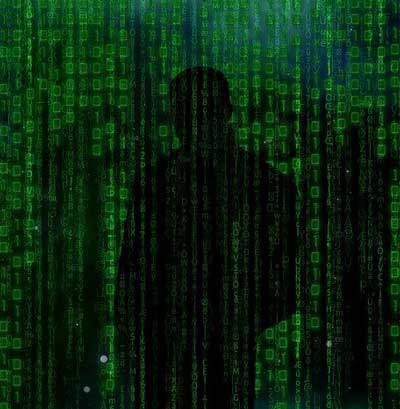Add Comment
Strong Growth From Q4FY26 - KPIT Technologies Q2FY26 Results • Anand Parekar
Demonstrations against the Gene Technology Bill across New Zealand • Simon Anderson
Meet The Person Who Founded Zen Technologies • The Neon Show
Motion -Tracking Radar with Arduino #tech #technology #innovation • To The Point 92











Sept 2020, Italy. An 11 years old boy decides to end its life by jumping out of the window. He leaves a farewell letter to his family. He writes that he must follow “a man wearing a hoodie” because he was so afraid.
According to the official investigation, the note refers to Jonathan Galindo, a mysterious man that shows itself in some social network masked as a strange “Goofy”, the famous Walt Disney character.
There is no reliable information about who is hiding behind this character and how he lures his victims. As always in these cases, the charge of fake news is launched, but in the presence of such a young victim, it is essential to treat the issue with due caution.
The news arose rumours in a lot of countries over the world, especially for the age of the victim, but is just one of the last cases of web challenge that ends with a suicide.
In recent years, this kind of challenges have multiplied on the world of the social network. Among the most recent and known, we can remember the Blue Whale challenge, the Benadryl challenge and Momo challenge.
The first one, dating in 2016 in Russia, consists in a series of 50 tasks assigned to each player by an unknown administrator over a 50 days period. It starts with a simple and innocuous request (ex: get up at 3:00, watch horror movie for 24 hours, etc.), but gradually introduce some elements of violence and self-injury.
Many participants, in fact, during the game published photos of self-harm, such as the famous drawing of the whale engraved with a knife on arms or legs. The game ends with a final task, that is the request of suicide.
The Blue Whale challenge, through social media, has spread all over the world. Cases have been reported and reported in virtually every continent, from Asia to America, from Europe to Africa. Fortunately, in a short time, several people were arrested, believed to be connected with the creation, development and sharing of the Blue Whale challenge.
The Benadryl challenge, spread on the social TikTok this year, has a different dynamic than the others because there isn’t a list of request or tasks and there isn’t any contact with an administrator or a fictitious character.
The participants must film themselves while taking as much of the drug as possible, normally the quantity "acceptable" to participate in the challenge is 10 or more tablets.
It is a known that antihistamine and its secondary effects may include dizziness, drowsiness, states of nervousness and irritation and hallucinations. The challenge is to share, live, this experience on this social media but many ignore that an excessive intake of this drug can have very serious consequences, even permanents, including heart attack and death.
About the Momo challenge, the available data are insufficient and unclear. Although many parents have reported his appearance in some childhood videos of YouTube, it’s, in fact, a widespread opinion that it is fake news or just an urban legend.
In this challenge, the participant searches on the web for the phone number of the strange character Momo, created in fact, in 2016 by the Japanese sculptor Keisuke Aiso for an art gallery dedicated to the world of horror. The opera, far from being an incitement to suicide, is inspired by Japanese tradition and folklore. Once the contact is established, the conversation continues on WhatsApp and begins with the request to participate in a mysterious game.
At this point a “paranormal” element is inserted, the character with which the participant communicate seems to know a lot of details of their private life, for example, the names of friends or relatives, or interests and hobbies.
Once the game begins, the participant enters a sort of spiral, he feels almost obliged to finish it as if it were a mission. This is one of the reasons why they follow with this strange game, the participants feel a mixture of curiosity and fear.
The main difference with other challenges is the very strong presence of threats, both to participants and their families. Momo, this strange and scary doll, threat, even death, who wants to back out of the game. This happens both with text messages and with the sending of explicit images.
All these challenges follow similar dynamics and have common characteristics. An example is the playful element. Especially at the beginning, it looks like something simple and harmless, a key factor for attracting child and teenagers.
Who participates feels involved and the desire to challenge himself and others often wins over common sense. It should, however, be remembered that initially, this kind of “game” had a strong solidarity connotation, in fact, a lot of well-known personalities have used their visibility to transmit some social messages. One example would be the Ice Bucket Challenge (2014).
Participants had to film themselves throwing a bucket of frozen water and make a donation to an association against the amyotrophic lateral sclerosis. At the end of the video, those who performed the challenge must invite someone else to do the same, in this way the phenomenon becomes viral.
Another fundamental aspect that affects is the effectiveness of the first contact with the victim. In most cases, it is not clear how this happens, if only on the initiative of the participants or if the creators of these games throw bait in social media and the web, also through some online multiplayer games or chat rooms.
It is, however, evident the ability of these people to attract and intrigue the audience of the youngest. It is also well expressed an excellent knowledge of the tastes, desires and a deep understanding of the character of many teenagers. This allows them to conquer them and lure them into a dangerous spiral, from which it’s hard to get out.
And if it is true that this shows us an almost captivating profile of the creators of these challenges, very little tells us about their motivations. In the case, for example, of the Blue Whale challenge, some of the arrested claimed to have created the challenge for boredom, others to demonstrate their skills, in the computer field and beyond, to the whole world.
Different is the theme of the participants' profile. It has not yet been possible to establish real constants such as family, economic, integration and social integration problems.
Often the victims belong to different social classes, with more or less structured families and had different ages. Obviously, some personal characteristics can influence, for example, low self-esteem or a strong shyness can push the person to seek affirmation, even if ephemeral, on the web. In other words, those who fall into this spiral accept the challenges to feel part of something and see the overcoming of them as a demonstration of strength.
The challenges described, even though numerous, are just an example of the dangers hidden on the web, both for the youngest and adults.
In facts, the excessive sharing, more and more fashionable, of photos and personal data often lead to cases of abuse, extortion, phishing and identity theft.
Another phenomenon born in the real world but increasingly present on the web is cyberbullying, which although has characteristics and dynamics very different from the challenges described, is representative of the dangers of the virtual world. These are true crimes against the person, prosecutable from the legal point of view.
While the latter concerns in most cases adults, the abuse and the extortion show a decrease in the average age of the victims.
Preadolescents and teenagers, driven by the desire to show off, more and more often publish or send photos and videos in a situation of intimacy. They ignore that a simple photo sent to the wrong person can be quickly spread on the web, without their knowing. This phenomenon, known with the term “sextortion”, isn’t yet legally defined but involves several offences recognized in the various Criminal Codes, like extortion and blackmail.
Most of these situations may seem absurd and it is difficult to understand how they can become so popular and viral among the younger ones, but the theme deserves attention, both from parents and educational institutions.
The out-of-control use of social media is one of the reasons for the worrying increase in the phenomenon. Also, it’s significant the lowering of the average age of social and web access. It is now normal to see children, even 8/9 years old, using mobile devices and applications.
In this regard, a recent study carried out in Spain analyses the behaviour of the child, adolescents and their families in the use of social media and Internet. 50% of parents allow children to use Internet or apps, like WhatsApp or TikTok, without any supervision.
Just 54% of respondents say they have a good dialogue on the risks arising from the misuse of technologies.
Another study by the S2 group, which specialises in cybersecurity, shows that only 25% of parents use applications to control their children’s devices. These data show a prevalent attitude of indifference and widespread ignorance of parents towards the technologies and its use in their owns homes.
Another important aspect that comes to light is that adults themselves underestimate the dangers.
Supervision and dialogue, both by parents and by the various educational institutions, are therefore essentials through the promotion of coordinated activities.
In schools, of all levels, real lessons about the use of the technologies, that encourage students to understand their use as a means of communication, learning and development, would be useful.
Similarly, there is a need for training actions aimed at teachers and parents, to give them the tools to deal with possible risk situations. The synergy of all the parties involved in the educational action is essential because often the transmission of different messages, sometimes conflicting, leads to the underestimation of the phenomenon.
Much work still needs to be done on this, but the various educational institutions, both nationally and internationally, are increasing awareness-raising campaigns on cybersecurity, cyberbullying and more generally violent results on the web. On the web pages of the Ministries of Education of the various countries, it is possible to find activities and informative texts, available for schools, of every degree, families, children and teenagers.
The European Union is also putting in place some support tools, such as the Safer Internet Centre, now present in all Member States. It is a free consulting service that any citizen in difficulty can access.
Other useful tools are the various existing parental control applications. These applications allow both remote control of the different devices and restricted access to web pages that are inappropriate or dangerous for minors.
Another available service is time limitation, this is useful for preventing Internet addiction in child and teenagers, that more and more often prefer virtual relationships to real ones. Telephone operators often offer this type of service by simply adding them to our Internet contract.
Alternatively, it is possible to find an extended range in the various digital distribution platforms, available for both mobile devices and computers. There are so many of them but it’s possible to report three, with excellent reviews on numerous web pages specialized in cybersecurity and technologies: Kaspersky Safe Kids, Norton Family Parental Control and Qustodio.
Another very useful trick is to install a browser specially created for children and their safety. These allow parents to create blacklists in which you can place all those sites that they consider inadequate or dangerous.
All these instruments lose their effectiveness if they are not accompanied by active communication.
For example, it is advisable to inform the child or teenagers about the use of parental control applications or other kinds of control and explain the reason, because it is an opportunity for the construction of a relationship of mutual trust and responsibility.
Besides, increasing their awareness of the issues related to technology will increase their digital skills and, possibly, their ability of defence.
The technology, in all of its forms, is not the monster, the villain to be defeated. On the contrary, real training on technologies is essential to broaden their positive effects and counter side effects. It’s an immensely useful resource, a window on the world, that allows us to break down social and economic barriers, to shorten distances and to access an infinite amount of content, both educational and professional as well as entertainment.
The web, just like all the great discoveries of humanity, implies great possibility but also a great responsibility.
Image by tigerlily713